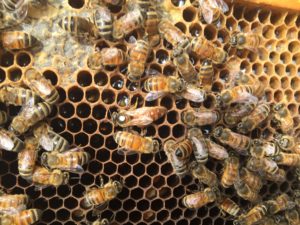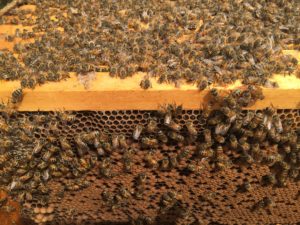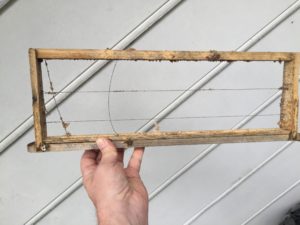Mid-Summer Update & Beehive Replacement Program
This year’s hive loss for me was astounding, but it did not really have an impact on my desire to keep beekeeping. It was really more of an Act of Nature that helped me to reduce my hive count (a goal that I had set out on, as of the end of last year.) After the big losses (around 50%), selling a dozen full hives and my normal increase for the year, I am down to 51 hives. It’s been a MUCH easier Spring/Summer and I should actually finish honey extraction this weekend. I have never finished in July! Well, maybe I did a decade ago, but certainly not in recent memory. Ideally, I hope to offload between 15 and 20 hives next year – this should get me to a much more manageable number for my current situation today (given family and general life demands). I will surely increase my hives again, sometime in the distant future, but look forward to running between 20 and 30 for the next decade or so.
Yesterday, there was an article in the Times Dispatch regarding bee loss – it looks like it averaged 60% for the state this past Winter!! At least I am not losing my mind – it was a tough one. The article did not point to a single issue, but I am quite certain there was one. I had too many hives that exhibited the exact same symptoms for me to believe otherwise. Plus, I have never had losses anywhere near what the state has until this past year. I have a hunch that a strain of nosema or something similar hit them hard (or maybe the weather created the perfect storm for that parasite.)
Regardless, the Spring ended up being one of my best for Nuc creation and survival. I am not sure if this was because I had less hives (and thus more time for the Nucs) or if it was the weather (it’s hard for me to believe that all that rain was good for the bees, but what do I know?) In addition, I feel really good about the hives that I sold, given they were stock that survived this previous, tough Winter.
The final observation for me is the low swarming season. Maybe I am about to get hammered with swarms, but I really have had VERY few swarms this season. In addition, I also received very few calls. This may all be coincidence (or maybe my hives are simply going to rock July and swarm away), but it is worth noting. I have several White queens out there, so something should happen in some of those hives. We shall see.
Lastly, the article in the paper pointed to a new Beekeeper program that is giving away full hives (from the state) to help offset some of the past Winter losses. I am really not sure if this is just equipment or it includes the bees, but it is worth checking out.
http://www.vdacs.virginia.gov/plant-industry-services-beehive-distribution-program.shtml



